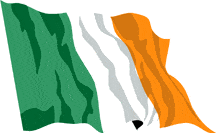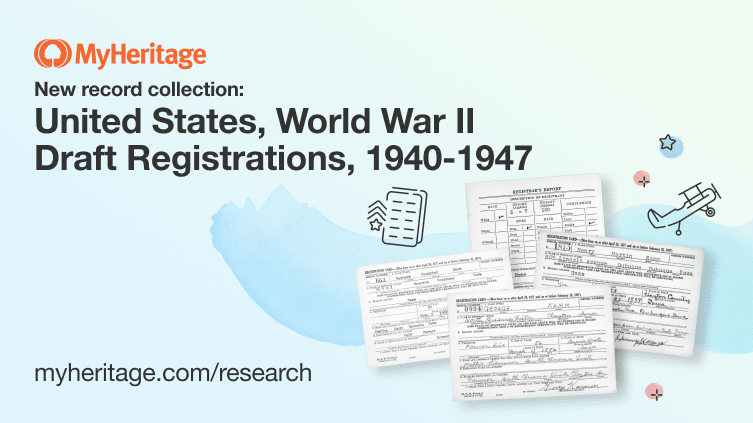If you are researching an Irish ancestor, be sure to clear your appointments for July 8, 2015 (except for your 9pm eastern U.S. appointment with Thomas MacEntee's webinar). That is the anticipated date of the release of the digitization of the entire collection of Catholic parish registers held by the National Library of Ireland. More than 390,000 digital images of these records will be online and available for free. Read more about it in their recent press release below.
National Library of Ireland Announces Launch Date for New Online Genealogy Resource
– Almost 400,000 images of Catholic parish register microfilms to be available online for free from 8th July 2015 –
The entire collection of Catholic parish register microfilms held by the National Library of Ireland (NLI) will be made available online – for free – from 8th July 2015 onwards. On that date, a dedicated website will go live, with over 390,000 digital images of the microfilm reels on which the parish registers are recorded.
The NLI has been working to digitise the microfilms for over three years under its most ambitious digitisation programme to date.
The parish register records are considered the single most important source of information on Irish family history prior to the 1901 Census. Dating from the 1740s to the 1880s, they cover 1,091 parishes throughout the island of Ireland, and consist primarily of baptismal and marriage records.
Commenting today, the NLI’s Ciara Kerrigan, who is managing the digitisation of the parish registers, said: “We announced initial details of this project last December, and received a hugely enthusiastic response from people worldwide with an interest in Irish family history. We are delighted to announce that the project has been progressing well, and we will be able to publish all the digitised records online from 8th July onwards.
“This is the most significant ever genealogy project in the history of the NLI. The microfilms have been available to visitors to the NLI since the 1970s. However, their digitisation means that, for the first time, anyone who likes will be able to access these registers without having to travel to Dublin.”
Typically, the parish registers include information such as the dates of baptisms and marriages, and the names of the key people involved, including godparents or witnesses. The digital images of the registers will be searchable by parish location only, and will not be transcribed or indexed by the NLI.
“The images will be in black and white, and will be of the microfilms of the original registers,” explained Ms. Kerrigan. “There will not be transcripts or indexes for the images. However, the nationwide network of local family history centres holds indexes and transcripts of parish registers for their local areas. So those who access our new online resource will be able to cross-reference the information they uncover, and identify wider links and connections to their ancestral community by also liaising with the relevant local family history centre.”
The NLI is planning an official launch event for the new online resource on 8th July.
Judy Wight spoke about this in her recent webinar, "Irish Genealogical Records in the 17th-19th Centuries. Webinar subscribers can watch the recording here, or here's a 15-minute preview.




Re Northern Ireland and Church of Ireland.
To the best of my knowledge there are some microfilms that hold Baptisims, Births and Marriages, I have personally seen one of the films when I visited Ireland in 1985.
These films are held by the Public Records Office Northern Ireland (PRONI) which is in Belfast.
I have yet to see online what I managed to transcribe back in 1985, as for when or if these records will be made available online that is another matter and as for being free again that is another matter.
The records I saw where for St Marks of Portadown, Armagh, Ireland which went back to about 1819 if I remember correctly.
There is a book that was published by Matterson which covers what is available and the time periods as well I think it is called Parishes and Church’s of Ireland.
A link I have just found has a PDF list of Anglican ( Church of Ireland) Parishes and Churches. http://ireland.anglican.org/about/168
It would appear based on this website that some parishes have been transcribe and are now online so watch this space.
What I found in my research was to look at Surnames of Ireland and hopefully find your surname that you are researching in this book if you have a rare surname then you may get lucky as these type of books normally cover the more common ( plentiful ) surnames which are based on the number of births in about 1880 and normally more than 5 births.
Have a look in the Telephone Directories, this will give you a more modern day Idea of where the family is now in Ireland and also give you the chance to write to some of these who may be able to tell you what county and maybe what Parish the family resided in back in about 1860, this is where I started from I wrote ten letters and got one reply, that one reply was well worth the effort as it gave me a townland, I already knew the county as my Great Grandfathers marriage certificate held that information, he was married here in New Zealand, I was later to discover that the person who replied was directly related.
As for the marriage certificates for England, Ireland and Wales, they leave a lot of valuable information out such as the mother of both the Groom and Bride, plus of course the county and country of birth.